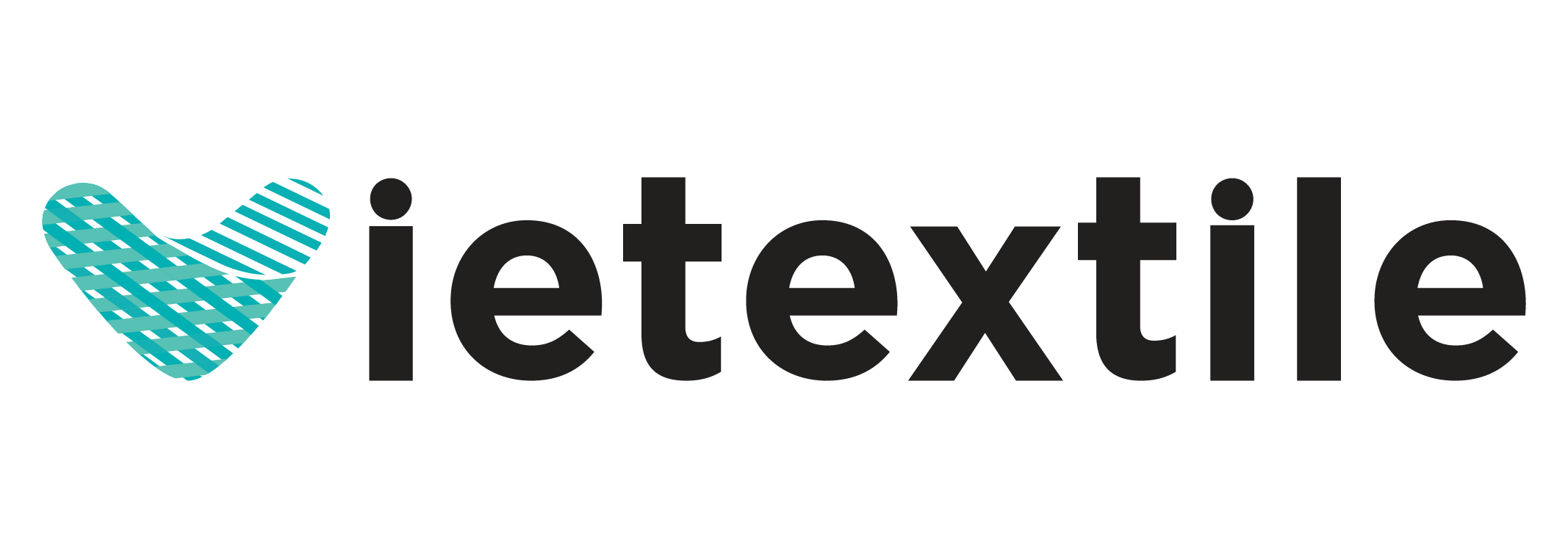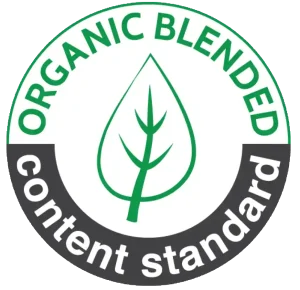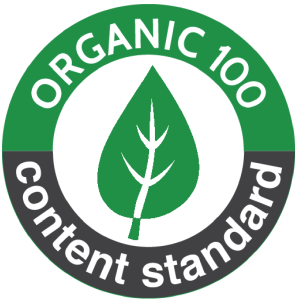The evolution of digital textile printing has revolutionized the industry, offering unparalleled flexibility, design complexity, and speed. However, achieving production-grade quality—characterized by vibrant colors, sharp detail, and exceptional wash fastness—is not solely dependent on the printer and the ink. The true secret lies in the meticulous application of pre-treatment and post-treatment processes to the direct printing fabric.
These two stages, often accounting for a significant portion of the total process time and cost, are chemically and physically essential, acting as the foundation and the sealant for the printed result.
A fabric that is improperly pre-treated will exhibit poor color absorption, resulting in dull, washed-out colors and bleeding. Conversely, a perfectly printed fabric that undergoes inadequate post-treatment will quickly fade, bleed during washing, and lack the required durability for commercial use. This comprehensive guide will dissect the chemical and mechanical intricacies of both stages, providing textile professionals with the actionable knowledge required to optimize their process for every type of direct printing fabric, from natural cotton and silk to synthetic polyester and nylon.
By mastering these critical stages, textile operations can elevate their quality standards, reduce costly reworks, and ensure their final products meet stringent consumer demands for longevity and vibrancy.

1. The Chemistry and Imperative of Pre-Treatment
Nội dung tóm tắt
TogglePre-treatment is a mandatory chemical process that prepares the direct printing fabric to receive, absorb, and chemically react with the digital printing inks. It is the single most critical step that dictates color yield and print definition.
1.1. Core Functions of Pre-Treatment Solution
The pre-treatment solution is not a single chemical but a complex formulation designed to execute several vital functions simultaneously:
- Moisture Management (Hygroscopic Agents): The solution contains hygroscopic agents (e.g., urea, glycols) that manage the fabric’s moisture content. This is crucial because digital inkjet printers rely on the fabric surface being uniformly damp to prevent rapid drying of the fine ink droplets, ensuring they stay liquid long enough to penetrate the fiber structure.
- Color Fixation (Acid Donors/Alkalis): For reactive and acid inks, the solution incorporates alkalis (e.g., sodium bicarbonate) or acid donors. These components create the necessary pH environment for the dye molecules in the ink to form a permanent, covalent bond with the cellulose (cotton) or polypeptide (silk/wool) fibers.
- Surface Control (Thickeners/Polymeric Resins): The solution often includes low-viscosity thickeners or polymeric resins. These agents prevent ink spreading (or wicking) by controlling dot gain, ensuring sharp, precise edges and fine lines in the final print.
- Defoamers and Wetting Agents: These ensure the solution spreads evenly across the entire surface of the direct printing fabric without bubbling or creating patchy areas, guaranteeing uniform ink reception.
1.2. Fabric-Specific Pre-Treatment Formulations (Direct Printing Fabric)
The exact chemical formulation must be tailored to the fiber type and the ink chemistry (Reactive, Acid, Pigment).
1.2.1. Reactive Inks (for Cellulose Fibers like Cotton)
- Key Chemicals: High concentrations of alkali (Sodium Bicarbonate or Carbonate) and Urea.
- Purpose: The high pH (alkali) is necessary for the reactive dye to form a covalent bond with the cotton’s hydroxyl groups. Urea acts as a powerful humectant, preventing the ink from drying too quickly, allowing maximum dye-fiber interaction time.
1.2.2. Acid Inks (for Polyamide/Protein Fibers like Silk, Wool, Nylon)
- Key Chemicals: Acid donors and high-molecular-weight thickeners (e.g., Alginate).
- Purpose: Acid inks rely on ionic bonds. The pre-treatment ensures the fiber retains the necessary charge and controls ink spread, while the thickener holds the color precisely on the fabric surface.
1.2.3. Pigment Inks (Universal, for Cotton, Poly, Blends)
- Key Chemicals: High concentrations of polymeric binders (resins).
- Purpose: Pigment inks do not chemically bond; they are mechanically adhered. The pre-treatment binder acts as a chemical “glue,” forming a durable polymer film on the direct printing fabric surface that encapsulates the pigment, essential for wash and rub fastness.
1.3. Application Methods for Pre-Treatment
The uniformity of the application is as important as the formulation itself.
- Padding (Foulard): The most common industrial method. The direct printing fabric is passed through a trough containing the solution and then squeezed between precise pressure rollers (nips). This ensures extremely uniform, controlled pickup (usually 60-100% dry weight). This method is necessary for high-volume, consistent output.
- Coating/Spraying: Used for smaller runs or specific print applications. Solutions are sprayed onto the fabric surface. While convenient, it is harder to control the uniform depth of penetration, leading to potential inconsistency if not done with specialized industrial spraying equipment.
- Sizing and Desizing (Prerequisite): Before any pre-treatment, the greige (unprocessed) direct printing fabric must be fully desized and scoured to remove natural waxes, oils, and sizing agents. Residual impurities prevent the pre-treatment chemicals from adhering to the fibers, leading to blotchy and uneven color results.
2. The Direct Printing Process: Linking Pre-Treatment to Curing
The actual printing phase serves as the critical bridge between the preparatory pre-treatment and the final post-treatment. Its effectiveness depends entirely on the chemical foundation laid in the first step.
2.1. Ink Penetration and Dot Gain Control
The pre-treatment polymers and hygroscopic agents ensure the ink droplet, upon hitting the surface, stays a controlled size (dot gain).
- Optimal Dot Gain: If the ink spreads too much (high dot gain), the image becomes blurred, and fine details are lost. If the ink spreads too little, color depth is compromised, leading to a “halo” effect. The pre-treatment formulation balances this spread to maximize saturation while maintaining sharp resolution on the direct printing fabric.
- Capillary Action: The prepared fiber surface (due to scouring and chemical agents) allows for controlled capillary action, drawing the dye molecule into the fiber structure rather than letting it sit only on the surface.
2.2. The Role of Intermediate Drying
Immediately after printing, the fabric often passes through a gentle drying tunnel. This process is crucial but must be carefully controlled.
- Preventing Migration: Rapid drying can cause the dye molecules to migrate to the surface edges of the printed dots, leading to a phenomenon known as “coffee ringing” or dye migration. The mild initial drying is designed to stabilize the ink without triggering this migration before the final fixation stage.
- Energy Consumption: The energy used for intermediate drying is a significant operational cost, emphasizing the need for highly efficient, well-insulated drying tunnels.
2.3. Environmental and Safety Considerations
The printing stage, and the chemicals used in pre-treatment, require strict environmental management.
- VOC Emissions: While digital inks are generally lower in Volatile Organic Compounds (VOCs) than traditional screen printing, the solvents and auxiliary chemicals used in pre-treatment and cleaning require adequate ventilation and capture systems, particularly with dispersed and acid inks.
- Waste Water Management: Residue from the pre-treatment process, especially the concentrated salts and alkalis, must be managed in the plant’s effluent treatment facility before discharge. The composition of the waste water changes significantly based on the direct printing fabric and ink type used.
3. Post-Treatment: Fixing, Curing, and Washing
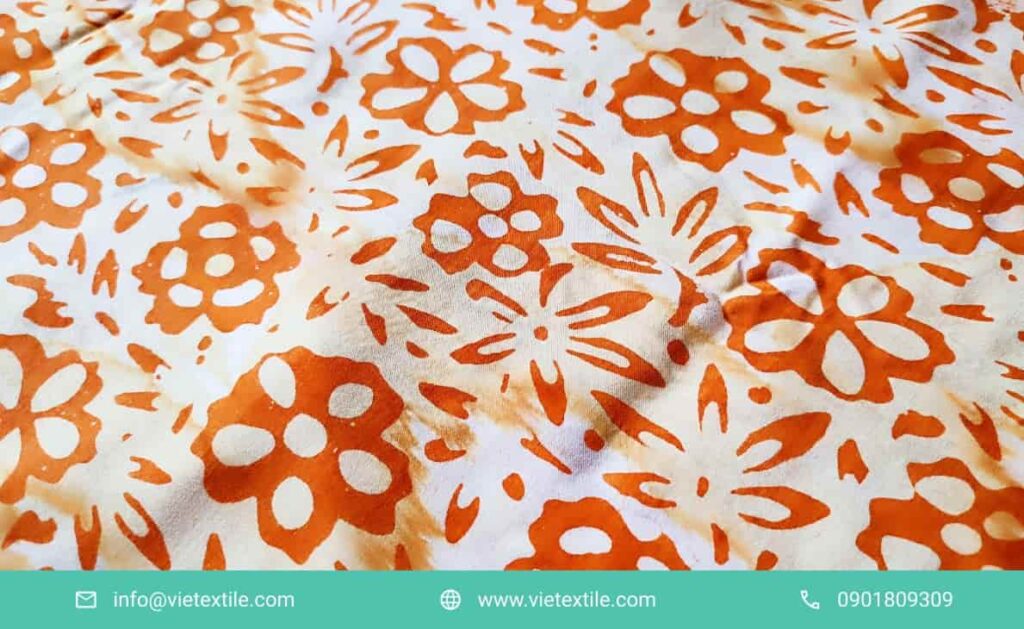
Post-treatment is the final stage that permanently bonds the color to the fiber, removes unreacted chemicals, and establishes the fabric’s commercial wash and rub fastness properties.
3.1. Fixation and Curing (The Chemical Bonding Stage)
This is where the dye molecules form a permanent, irreversible bond with the direct printing fabric fiber. The method used depends entirely on the ink type.
3.1.1. Steaming (for Reactive and Acid Inks)
- Process: The printed fabric is exposed to saturated steam (100–105°C) or Superheated Steam (160–180°C) for 6–10 minutes in a steamer unit.
- Mechanism: Steam provides the energy (heat) and the moisture necessary to fully dissolve the dye molecules and the pre-treatment chemicals (alkalis/acids). This dissolved state allows the final, permanent chemical reaction (covalent or ionic bonding) to occur between the dye and the fiber, locking the color into the direct printing fabric.
3.1.2. Dry Heat Curing (for Pigment and Disperse Inks)
- Process: The fabric is run through an oven or curing unit at high temperatures (typically 150–180°C) for 3–5 minutes.
- Mechanism: Heat polymerization. This heat cross-links the polymeric binder applied during pre-treatment, turning the soft binder into a hard, insoluble polymer film that physically traps the pigment particles onto the fabric surface. Disperse inks also sublime (turn to gas) and penetrate polyester fibers under this high heat.
3.2. Washing (Soaping and Neutralization)
After fixation, a thorough washing process is non-negotiable for all chemically bonded inks (Reactive, Acid, Disperse).
- Removing Unfixed Dye: The primary goal is to wash away all unfixed dye molecules and residual pre-treatment chemicals (salts, thickeners, alkalis). If these residues remain on the direct printing fabric, they will bleed onto the unprinted areas during consumer washing and dramatically reduce the final fastness properties.
- Soaping: The washing process often involves a hot soaping stage (using specialized dispersing agents) to help solubilize and lift the unfixed dye particles from the fiber surface.
- Neutralization: For reactive prints, a mild acid wash (e.g., acetic acid) may be required to neutralize residual alkali, stabilizing the fiber and preparing it for final finishing. The consistency and temperature control of the washing stage are critical loom machine spare parts.
3.3. Final Finishing (Softness and Handle)
After washing, the fabric often feels stiff due to the chemical treatments. A final finishing step restores the desired “hand-feel” (softness).
- Softening Agents: Application of specialized textile softeners (e.g., silicone emulsions) can significantly improve the drape and feel of the direct printing fabric, making it commercially acceptable. These agents must be chosen carefully to ensure they do not compromise the color fastness achieved in the preceding stages.
4. Quality Control and Troubleshooting
Effective quality control protocols at the pre-treatment and post-treatment stages are essential for process optimization and waste reduction.
4.1. Pre-Treatment Quality Checks
- Pick-Up Rate (PU%): The most critical check. Measure the weight of the direct printing fabric before and after padding. The percentage increase (PU%) must be within a very tight tolerance (e.g., +/- 2%) to ensure uniform chemical application.
- pH Measurement: Check the pH of the pre-treated fabric (using a pH meter or strips) before printing. Incorrect pH directly compromises the fixation reaction later (too low pH for reactive inks results in no fixation).
- Wetting Test: A simple test to confirm the scouring was effective. Place a drop of water on the fabric; it should be fully absorbed almost instantly. Slow absorption indicates residual sizing or oils, necessitating a re-scour.
4.2. Post-Treatment Quality Checks (Fastness Testing)
These tests determine if the post-treatment was successful in locking the color.
- Wash Fastness (ISO 105 C06): The primary commercial test. A printed sample is washed under specific conditions (temperature, detergent, mechanical agitation) to measure color loss and staining on adjacent white fabrics. Poor wash fastness indicates insufficient fixation (steaming/curing) or inadequate post-wash (unfixed dye residue).
- Rub Fastness (Crocking) (ISO 105 X12): Measures color transfer due to friction. Poor rub fastness often indicates the dye is sitting too much on the fiber surface, often a sign of insufficient penetration or improper binder curing (for pigment inks).
4.3. Common Troubleshooting Scenarios
| Problem | Likely Cause in Treatment Stage | Solution |
| Dull/Faded Colors | Insufficient pre-treatment chemicals (low PU%) or incorrect pH, preventing full chemical reaction. | Increase chemical concentration or check pH of pre-treated direct printing fabric. |
| Color Bleeding/Blurring | Excessive pre-treatment pickup (high PU%) or insufficient thickener, causing excessive ink spread (high dot gain). | Reduce padding pressure to lower PU% or adjust thickener concentration. |
| Low Wash Fastness | Insufficient fixation time/temperature (short steaming or low curing heat), leaving dye unfixed. | Increase steaming time/temperature or increase curing oven temperature for direct printing fabric. |
| Stiff Fabric Hand-Feel | Residual binder/thickener left after washing, or insufficient application of the final softening agent. | Improve the hot-soaping stage in post-treatment, or increase softener dosage. |
5. Material Science: Chemicals and Equipment
The efficacy of the treatment process relies heavily on the quality and performance of the chemicals and the associated machinery.
5.1. Chemical Purity and Consistency
Industrial-grade chemicals must meet high purity standards. Variations in chemical concentration, especially for critical items like sodium bicarbonate or urea, can lead to unpredictable dyeing results, forcing costly color adjustments in the final print file. Using pre-mixed, high-quality formulated pre-treatment solutions often provides better consistency than mixing individual commodity chemicals in-house.
5.2. Steamer Technology
The design of the steaming unit (the key post-treatment machine) is crucial for the fixation of the direct printing fabric.
- Saturated vs. Superheated Steam: Saturated steam (100–105°C) is ideal for reactive and acid inks as the moisture aids in dye solubility. Superheated steam is necessary for some disperse ink fixation. The steamer must be capable of maintaining an oxygen-free environment and uniform temperature to ensure consistent fixation across the entire fabric width.
- Steamer Seals and Efficiency: Poorly maintained steamer seals lead to energy loss (steam leaks) and inconsistent fixation results due to the introduction of cold air, highlighting the importance of regular maintenance.
5.3. Washing Range Equipment
The industrial washing range must be capable of providing high flow, temperature stability, and multiple stages (baths).
- Counter-Flow Washing: Efficient washing ranges use a counter-flow principle, where the dirtiest water is used for the first rinse, and the cleanest water for the final rinse. This minimizes water consumption while maximizing the removal of unfixed dye from the direct printing fabric.
- Squeezing/Nip Rollers: Precision squeezing rollers between wash baths mechanically remove contaminated water before the fabric enters the next bath, drastically reducing water usage and increasing cleaning efficiency.
6. Environmental and Sustainability Aspects (Direct Printing Fabric)
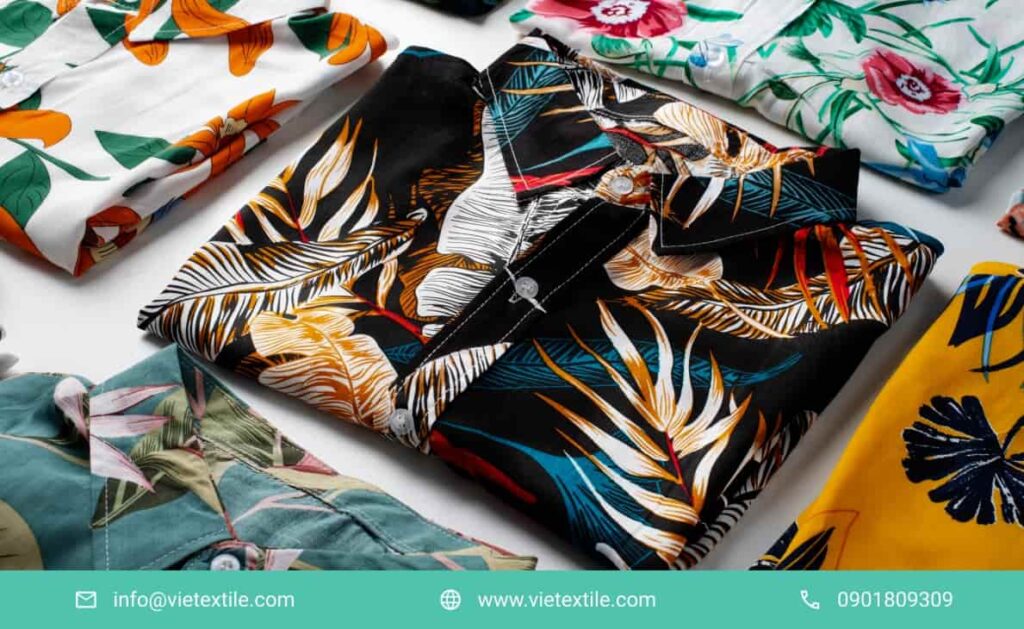
Optimized pre-treatment and post-treatment are essential levers for reducing the environmental footprint of digital printing.
6.1. Water and Energy Reduction
- Low-Water Washing: By optimizing the pre-treatment pickup rate, less chemical is used, which, in turn, requires less water to wash out. Modern washing ranges use minimal liquor ratios (MR) to achieve the required fastness with less water and thermal energy for heating the water.
- Cold Fixation: Research into “cold fixation” techniques for reactive inks (allowing fixation to occur slowly at room temperature) aims to eliminate the massive steam and energy required for traditional high-temperature steaming, offering a future sustainable path for the direct printing fabric process.
6.2. Chemical Toxicity and Substitution
The industry is moving toward substituting highly toxic or regulated chemicals.
- Urea Reduction: Efforts are focused on reducing or eliminating urea (a nitrogen compound that contributes to effluent pollution) in pre-treatment formulations by using alternative hygroscopic agents without compromising color yield on the direct printing fabric.
- Formaldehyde-Free Binders: For pigment printing, the new generation of polymeric binders are formulated to be formaldehyde-free, reducing human health and environmental risks during the curing process.
6.3. Closed-Loop Systems
Implementing a closed-loop system for water recycling in the washing stage significantly reduces the volume of wastewater. Advanced filtration (ultrafiltration and reverse osmosis) can remove salts and dyes, allowing treated water to be reused in non-critical stages like the initial rinsing of the direct printing fabric.
7. Frequently Asked Questions (FAQ) about Direct Printing Fabric Treatment
Q7.1. Why can’t I skip pre-treatment for reactive ink on cotton?
A: Pre-treatment is mandatory for reactive inks on cotton (direct printing fabric) because it introduces the alkali (high pH) and moisture-managing agents (urea). Without the alkali, the reactive dye cannot form a permanent covalent bond with the cellulose fiber, leading to minimal color yield and zero wash fastness.
Q7.2. What happens if I cure a pigment print at too low a temperature?
A: Curing at too low a temperature or for too short a time prevents the polymeric binder from fully cross-linking and hardening. The pigment particles will only be weakly adhered to the direct printing fabric surface, resulting in extremely poor wash fastness and severe color loss during rubbing (crocking).
Q7.3. How does the type of water affect my treatment results?
A: Water hardness (high calcium/magnesium content) can severely affect chemical reactions. Hard water can precipitate certain dye molecules or negatively interact with auxiliary chemicals in the pre-treatment, leading to inconsistent color and poor print quality on the direct printing fabric. Deionized or softened water is often recommended.
Q7.4. Is steaming necessary for disperse inks on polyester?
A: No, disperse inks on polyester are fixed using dry heat curing (sublimation) at 160–180°C. Steaming is less effective for synthetic fibers. The dry heat causes the disperse dye to turn into a gas, which then penetrates and dissolves into the polyester fiber structure of the direct printing fabric.
Q7.5. What is the difference between direct printing fabric and transfer printing?
A: Direct printing fabric involves the printer depositing ink directly onto the textile surface. Transfer printing involves printing the design onto a special paper first, which is then heat-pressed onto the fabric. Both require specific pre- and post-treatments, but the chemical interactions differ based on the process.
Q7.6. How can I reduce the stiff hand-feel after pigment printing?
A: The stiffness comes from the necessary polymer binder. Ensure the final washing/rinsing stage is thorough (to remove residual, unfixed chemicals), and then apply a high-quality, specialized silicone micro-emulsion softener in the final finishing bath to restore the fabric’s soft hand-feel.
Q7.7. How long should fabric be stored after pre-treatment before printing?
A: Pre-treated direct printing fabric should ideally be printed within 24 to 48 hours. Long-term storage can lead to the deterioration of chemical activity (especially alkalis) and changes in the critical moisture content, compromising the final print quality. Store in a cool, humidity-controlled environment.
Q7.8. What pH level is ideal for pre-treatment of cotton with reactive inks?
A: The pre-treated cotton fabric should typically have a final pH in the range of 10.5 to 12.0. This strong alkaline environment is required to deprotonate the cellulose hydroxyl groups, making them highly reactive to the dye molecules during the subsequent steaming process.
Q7.9. Why is a wash-off required after disperse printing and curing?
A: Even though disperse inks fix via sublimation, a light wash-off is necessary to remove residual chemicals, unfixed low-molecular-weight dyes (which can cause rub fastness issues), and any residual traces of the paper or pre-treatment coating from the direct printing fabric.
Q7.10. How does a faulty steamer affect color vibrancy?
A: A faulty steamer (e.g., poor seal, fluctuating temperature) results in incomplete dye fixation. When the unfixed dye is washed off, the resulting color yield is much lower than expected, leading to dull, pale colors and reduced depth of shade on the direct printing fabric.
8. Conclusion: The Dual Pillars of Digital Fabric Quality
The success of digital textile production hinges on recognizing pre-treatment and post-treatment not as auxiliary steps, but as the chemical and physical core of the entire process. The quality, precision, and consistency applied during the preparatory phase determine the printer’s ability to achieve maximum color yield and sharp definition. In turn, the efficiency of the post-treatment stage—specifically fixation, curing, and thorough washing—translates that potential into commercial reality, ensuring the direct printing fabric is durable, colorfast, and possesses the desired hand-feel. By meticulously controlling chemical purity, equipment performance (steamers and washing ranges), and critical parameters like Pick-Up Rate and pH, textile manufacturers can guarantee exceptional product quality, reduce waste, and build a truly sustainable and profitable digital printing operation.
Partner with VieTextile to access the highest quality chemicals, equipment, and expert consultation necessary to perfect your pre-treatment and post-treatment protocols for any direct printing fabric.
Contact VieTextile Today for Expert Consultation!
Hotline: 0901 809 309
Email: info@vietextile.com
Website: https://vietextile.com
